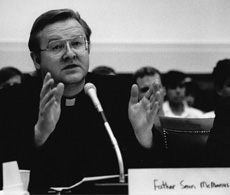Fighting over there for acceptance over here
Posted By: April 27, 2017
Echo News Vol. 91; no 16: April 19-25, 2017
A hundred years ago this week, the United States entered a global conflict it had sought to avoid for nearly three years.
Woodrow Wilson had only just taken the oath of office for a second time after winning a stunningly close re-election campaign whose motto was, “He kept us out of war.”
In April 1917, he led the United States into war, asking Congress for a declaration of war after Germany resumed its policy of unrestricted submarine warfare in the Atlantic.
The New World thus took sides in the Old World’s collective attempt at continental suicide. America joined the Allies in the Great War against the Central Powers.
World War I, as it became known after another and even more horrific war broke out in 1939, remains one of the 20th Century’s most important milestones, although it barely registers on this side of the Atlantic.
Young Americans have only the vaguest notion that there must have been a World War I if there was a World War II (which they know a little bit about, thanks to the movies).
But they have almost no idea about who fought whom, or why.
Then again, the “why” of World War I was a mystery to most people who lived through it.
For the Irish in the U.S., World War I has slightly more historic meaning than it does for other groups, for reasons having to do with American politics and culture in addition to the war’s significance for Ireland itself.
The war became quite like the Civil War – a test for a group whose loyalty once again was suspect.
World War I produced some of Irish America’s greatest war heroes and stories: Bill Donovan, winner of a chest full of medals, including the Medal of Honor; the men of the old Fighting 69th, incorporated into the 165th Infantry but nearly as Irish as the outfit that served under Michael Corcoran and Thomas Francis Meagher during the Civil War, and, of course, the famous Father Francis Duffy, chaplain in the 165th, Canadian immigrant, American patriot.
The Irish-American contribution to the U.S. war effort was measured in bloodshed on the fields of France, at Chateau-Thierry and Meuse-Argonne.
The conspicuous valor of the Irish-American troops – fighting on the same side as the British army (which, of course, was populated with tens of thousands of Irish-born troops) – served as yet another reminder to a skeptical public that it was possible to be a hyphenated American and a loyal American.
In the years leading up to the war, both Wilson and Theodore Roosevelt roundly denounced the idea of hyphenated Americanism.
Roosevelt demanded what he called “one hundred percent Americanism” from groups that continued to embrace parts of its Old World identity, even as they assimilated, and changed American culture.
Those groups, not coincidentally, were neither Anglo-Saxon (a hyphenated identity, as John Devoy, once noted) nor Protestant, the hallmarks of American identity as Roosevelt, Wilson, and others saw it.
Irish Catholics were far more powerful and assimilated in the early 20th Century than they were during the Civil War, but their religion, as Al Smith would discover in 1928, continued to keep them beyond the pale of mainstream American culture.
What’s more, once the United States entered the war in April 1917, Irish Americans who had been collaborating with Germany on behalf of Ireland were condemned as virtual traitors, even though their contacts with Germany took place while the United States was neutral.
The Irish-Catholic mayor of New York in 1917 was John Purroy Mitchel, grandson of the great Irish patriot John Mitchel.
He was running for re-election that year after four years of ingratiating himself with elite reformers and alienating himself from the mass of voters.
In his desperate and vain attempt to retain office, he condemned his fellow Irish Catholics (and a German Protestant, Robert Wagner) as disloyal Americans who had, in essence, committed treason.
The charge was picked up by the press, which was filled with speculation that some of New York’s leading Irish activists would be indicted for treason.
It was in this highly charged atmosphere that Irish Americans boarded transport ships to take them over there, to the killing fields of Europe, where they came to the rescue of the British and French.
Their valor once again puts to shame those who contended that they were something other than “one hundred percent” American because of their religion and their embrace of a hyphenated identity.
The war, then, was yet another step toward the mainstream for Irish Catholics in America.
But as Smith would discover in 1928, when the Ku Klux Klan burned crosses during his campaign appearances, complete acceptance remained and would remain, elusive, never mind the bravery and sacrifices of Irish America’s warriors.










